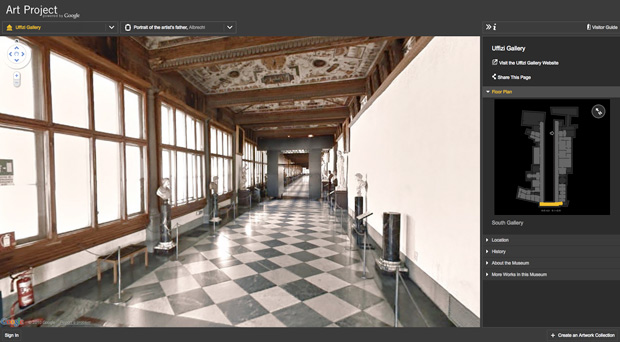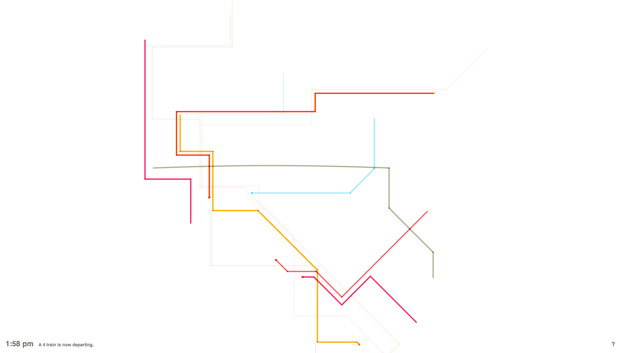Google Art Project and MTA.ME
Two new interactive works from the Internet’s creative powerhouse


If the big business of art makes you shed a little tear for civilization, the Google Art Project might be for you. Eschewing the practices of increasingly high admission fees (and the dumbed-down blockbuster shows that come with it), the Internet behemoth introduces a platform that transcends both the boundaries of geography and cash flow. While of course this digitized version can’t do what a well-curated show in a beautiful gallery does, the site’s capability to reach a wide audience and as an educational tool (not to mention the potential for inventive hacks) are hallmarks of Google’s approach to the modern online world.
Using their Street View technology, you can browse the museums—17 in all, including the Uffizi, MoMA, Versailles, the Van Gogh Museum and the Tate—as a whole (though some works are blurred due to copyrights). And because it’s all captured in high-res, you can zoom in on individual works and scan the entire canvas to see details such as cracks or paint strokes. Each museum is even offering one of their most valued works as a gigapixel image for a bogglingly detailed close-up views, and the setup even allows you to create and save your own virtual collection of art.

Thanks to the cooperation of the museums (Google approached each and let them decide their scope of participation), the resource also comes packed with videos from museum experts, extensive information on artists and easily-navigable floor plans. For the elderly, anyone else who can’t make the trip to see the world’s masterpieces, OCD planners, or art history students, the Project makes for an invaluably in-depth reference tool. To see how it works in full, have a look at the video tutorial.

The news of Google Art Project comes on the heels of the buzz yesterday about another artful online experiment from Google designer Alexander Chen, who turned New York’s subway map into a strummable set of strings. MTA.ME uses HTML5 to make the real-time subway schedule into an interactive musical instrument, stripping the map to a beautifully-spare set of colored lines with a background that fades from white to black as the 24-hour loop falls from day to night.












